



Next: and Muon Detection System,
Up: Electromagnetic Calorimetry, ECL
Previous: Photon beams at the
Contents
Before the final installation, the light output of each crystal was
calibrated by using cosmic rays. The crystal by crystal variation of
about 10 % was measured. The channel by channel gain variation of
electronics was found to be about 5 %. After the installation into
the Belle detector in the fall of 1998, the consistency and stability
of the calibration constants have been monitored with cosmic rays
which penetrated through more than three neighboring counters. The
stability of the crystal gains has been observed to be better than 1
% during a period over three months [67].
The absolute energy calibration has been carried out by using Bhabha
and
events. With a Bhabha sample,
the calibration constant of th counter can be obtained by
minimizing defined as
where is the expected energy of the Bhabha electrons. This
value is known as a function of  in the asymmetric
collider. The function is the correction factor due to the
shower leakage and the front material effect, which was determined by
a Monte Carlo simulation. This function was introduced in the
minimization in order to maintain the consistency between
real and Monte Carlo events. The minimization was carried out by
taking
in the asymmetric
collider. The function is the correction factor due to the
shower leakage and the front material effect, which was determined by
a Monte Carlo simulation. This function was introduced in the
minimization in order to maintain the consistency between
real and Monte Carlo events. The minimization was carried out by
taking  8000
8000  8000 sparse matrix inversion into account.
Approximately 50 events per counter were used for this calibration.
8000 sparse matrix inversion into account.
Approximately 50 events per counter were used for this calibration.
After the KEKB collider was commissioned in June 1999, a large number
of Bhabha and events have been accumulated to perform
the absolute counter-by-counter calibration. The energy resolution was
achieved to be 1.7 % for the barrel ECL, and 1.74 % and 2.85 % for
the forward and backward ECL, respectively, as shown in
Fig. ![[*]](./icons/crossref.png) .
.
Figure:
Energy resolutions measured from Bhabha event samples : overall, barrel, forward end-cap and backward end-cap.
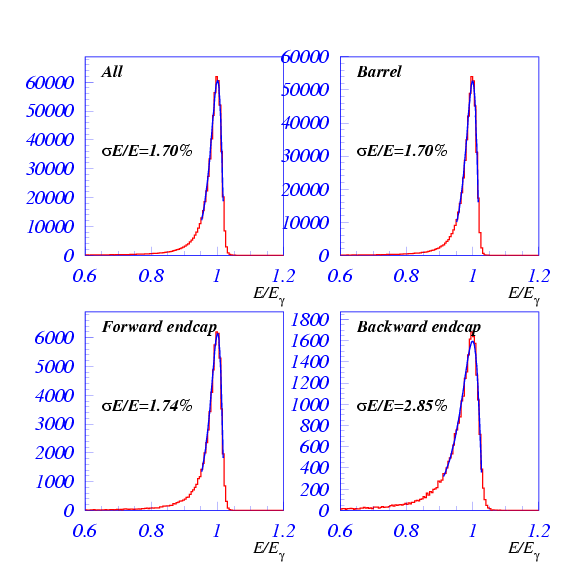
|
Two-photon invariant mass distributions in hadronic events are shown
in
Figs. ![[*]](./icons/crossref.png) (a) and (b). The clear peaks of
(a) and (b). The clear peaks of  and are seen at each nominal mass and the energy resolution has
been achieved to be 4.9 MeV for
and are seen at each nominal mass and the energy resolution has
been achieved to be 4.9 MeV for  and less than 10 MeV for
.
and less than 10 MeV for
.
Figure:
Two photon invariant mass distribution for hadronic events
(a) in
and (b) in
where each photon energy was required to be greater than
30 MeV in the barrel region.
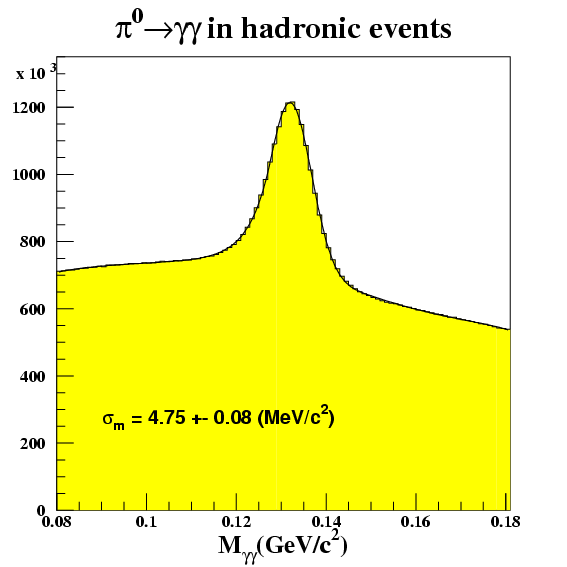
|
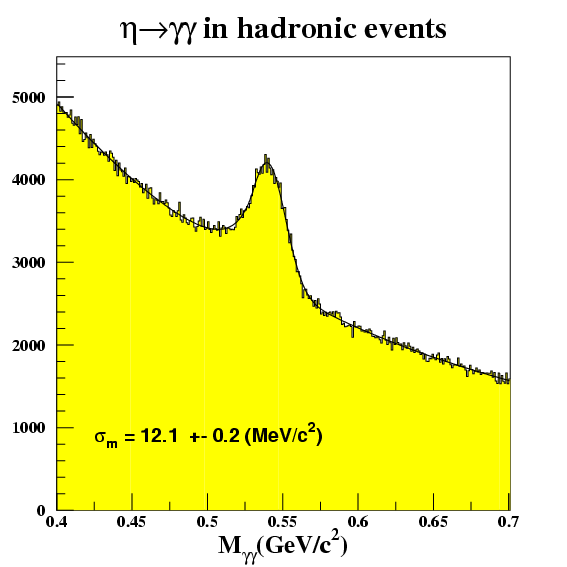
|
During the operation period of KEKB, ECL received radiation doses
associated with the beam background. Thus the light output of each
CsI counter has decreased. The instantaneous dose rate is
proportional to the total current through the PIN photodiode and the
accumulated dose can be calculated by integrating the dose rate over
the period of time. An increase of 2.5 nA/crystal for one year
( 10
10 s) corresponds to 100 Rad. During the period of June
and July 1999, ECL was irradiated with the dose of 4 and 13
Rad/crystal for the barrel and innermost backward end-cap ECL,
respectively, as shown in Figs.
s) corresponds to 100 Rad. During the period of June
and July 1999, ECL was irradiated with the dose of 4 and 13
Rad/crystal for the barrel and innermost backward end-cap ECL,
respectively, as shown in Figs. ![[*]](./icons/crossref.png) (a) and
(b). Fig.
(a) and
(b). Fig. ![[*]](./icons/crossref.png) shows the degradation rate of light
output as a function of
shows the degradation rate of light
output as a function of  . The light output decreased about 1
% in the barrel region and about 2 % in the end-cap regions.
. The light output decreased about 1
% in the barrel region and about 2 % in the end-cap regions.
Figure:
Radiation dose at barrel ECL (upper) and end-cap ECL (lower)
as a function of time.
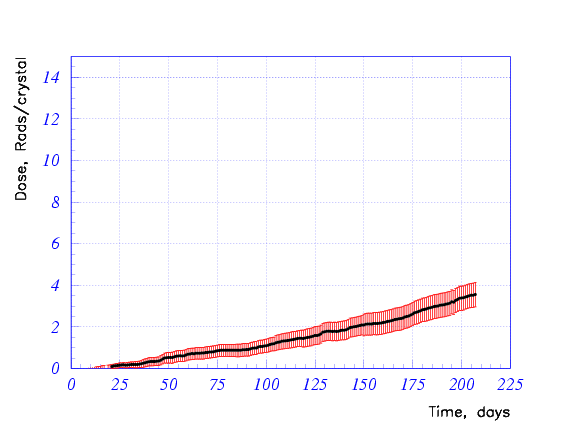
|
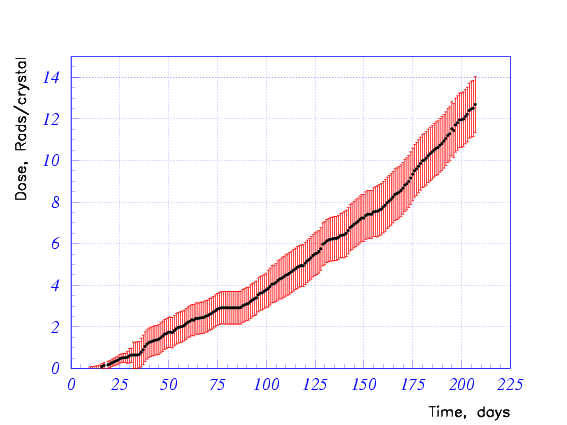
|
Figure:
Degradation of the light output of the ECL counters as a
function of  -id.
-id.
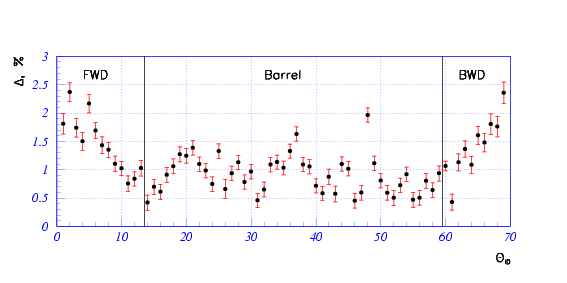
|




Next: and Muon Detection System,
Up: Electromagnetic Calorimetry, ECL
Previous: Photon beams at the
Contents
Samo Stanic
2001-06-02



